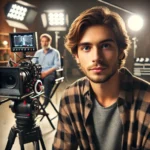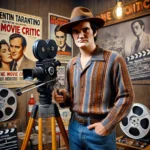Understanding film theory is crucial for anyone who wants to engage deeply with cinema. Film theory provides the tools to analyze, critique, and appreciate movies on a much deeper level. Whether you’re an aspiring filmmaker, critic, or just a passionate moviegoer, grasping these fundamental concepts can transform how you see and interpret films. Below, we’ll explore key film theory concepts that every cinephile should know.
Mise-en-Scène
Mise-en-scène is a French term that translates to “placing on stage.” It refers to everything that appears before the camera in a film – from lighting, set design, and costumes to actor positioning and movement.
Key Elements of Mise-en-Scène:
- Setting: Where the action takes place. Is it a realistic environment or stylized?
- Lighting: The way a scene is lit can drastically affect its tone and mood.
- Costume and Makeup: Help define characters and the period the film is set in.
- Blocking: How characters are arranged and move within the frame.
A famous example is Stanley Kubrick’s “The Shining”, where the carefully arranged sets and lighting enhance the tension and unease.
Montage
Montage refers to the editing technique where a series of shots are pieced together to convey a passage of time or to create a specific emotional response. It’s often used to compress time and provide visual storytelling.
Key Types of Montage:
- Soviet Montage: Pioneered by directors like Sergei Eisenstein, this technique focuses on the collision of images to create new meaning.
- Hollywood Montage: Often used to show the passage of time, such as training montages in sports films.
A classic example is Eisenstein’s “Battleship Potemkin”, where the Odessa Steps sequence uses montage to increase tension.
Diegetic vs. Non-Diegetic Sound
Sound plays a vital role in film, but not all sounds are treated equally. Diegetic sound refers to sound that originates from within the world of the film (e.g., dialogue, footsteps). Non-diegetic sound, on the other hand, is external to the film’s world, such as background score or voiceovers.
Examples:
- Diegetic Sound: Conversations between characters, radio playing in a scene.
- Non-Diegetic Sound: A film’s score or soundtrack that the characters can’t hear.
Christopher Nolan’s “Inception” masterfully combines diegetic and non-diegetic sound, especially in scenes where the ticking of a clock escalates tension.
Auteur Theory
The auteur theory suggests that a director’s personal influence and vision are the primary driving forces behind a film. According to this theory, certain directors are considered “auteurs” because their films have a distinctive style or thematic consistency.
Famous Auteur Directors:
- Alfred Hitchcock: Known for his suspenseful storytelling and signature use of visual symbolism.
- Wes Anderson: Famous for his symmetrical framing and unique color palettes.
- Quentin Tarantino: Notable for his dialogue-heavy scenes, nonlinear storytelling, and stylized violence.
Cinematography
Cinematography refers to the art and technique of capturing visual images in a film. It encompasses everything from camera angles and movement to lens choices and shot composition.
Key Cinematographic Techniques:
- Long Take: A continuous shot without cuts, often used to immerse the audience in the scene.
- Close-Up: Highlights a character’s facial expressions, often to reveal emotion.
- Dutch Angle: A tilted camera shot that conveys disorientation or tension.
Roger Deakins, the cinematographer for “Blade Runner 2049,” uses stunning visuals to immerse viewers in a futuristic, dystopian world.
Genre Theory
Genre theory involves analyzing films based on their categorization into specific genres. Understanding genre conventions can help cinephiles predict narrative structure, character types, and even audience expectations.
Popular Film Genres:
- Horror: Designed to elicit fear, often through suspense, surprise, and gore.
- Film Noir: Characterized by its dark, moody visuals and themes of moral ambiguity.
- Science Fiction: Often explores futuristic settings and themes of technology and society.
Ridley Scott’s “Alien” blends horror and science fiction, using the claustrophobic spaceship setting to heighten fear.
Semiotics in Film
Semiotics is the study of signs and symbols and how they are used to convey meaning in film. Every visual and audio element in a movie can be seen as a “sign” that the audience interprets.
Key Aspects of Film Semiotics:
- Signs: Anything in the frame that conveys meaning, like a character’s costume or a specific object.
- Codes: Systems of meaning, such as genre conventions or cultural references.
For instance, in “The Godfather,” the recurring use of oranges foreshadows death and danger.
Realism vs. Formalism
These are two contrasting approaches to film. Realism seeks to present life as it is, without manipulation or stylization, while formalism emphasizes the artificial nature of film, focusing on the creative use of visuals and editing.
Examples:
- Realism: Films like “Bicycle Thieves” (1948) focus on naturalistic performances and everyday struggles.
- Formalism: Movies like “2001: A Space Odyssey” (1968) focus more on abstract visuals and surreal storytelling.
Conclusion: Deepening Your Cinematic Journey
By understanding these core film theory concepts, you’ll be able to dive deeper into the movies you love, noticing the subtleties and techniques that make each film unique. Whether you’re analyzing an indie drama or a blockbuster, these ideas can enhance your appreciation of cinema’s artistry.


